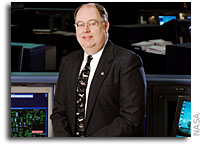Wayne Hale’s Blog: Encouraging Innovation at NASA

I have another video for you to watch, but before you do let me give you a little context.
On this date, March 16, 1926, Dr. Robert Hutchings Goddard, professor of Physics at Worchester Polytechnic Institute in Massachusetts tried out his newest invention in his Aunt Effie’s cabbage patch near Auburn, Massachusetts. Pretty old cabbages in that garden in March in Massachusetts. Dr. Goddard’s invention? The world’s very first liquid fueled rocket. It flew; not very high nor very far, but it flew. And attracted the attention of the town’s volunteer fire department – they asked Dr. Goddard not to do any more experiments there.
Dr. Goddard had carried on his work despite the fact that a few years earlier he was humiliated in a very public forum. After he had delivered a paper entitled “A Method of Reaching Extreme Altitudes”, the New York Times devoted several column inches in its editorial page to denigrate his thoughts. Most quotable from the NY Times editorial was this comment about Dr. Goddard’s grasp of physics: “”does not know of the relation of action to reaction, and the need to have something better than a vacuum against which to react”. A classic line if there ever was one. I should note that in July 1969 (almost a half century later and well after Dr. Goddard’s death) the NY Times posted a correction with the words “The Times regrets its error.” Indeed.
The public criticism confirmed Dr. Goddard’s introverted nature and he continued his work, mostly in secret and mostly in isolation for another quarter century. Other, more knowledgeable folks, read his work and were enlightened by it. In 1945, German engineers from Peenemunde, where rocketry had made huge – regrettable at the time – advances, when interrogated by their American captors about rockets, replied “Why don’t you ask your own Dr. Goddard?” They paid attention. We did not.
We cannot afford to let good ideas slip from our grasp. Innovation and creativity are the foundation on which our economy is really founded.
So a few weeks ago, a team of folks at Johnson Space Center made a video report on what are some of the barriers to innovation at NASA. A lot of you watched that video and many of the comments reported that these barriers exist in a wide spectrum of private and public organizations. That video was an amalgam of the most egregious examples of poor communication and bad management that unfortunately still occurs from time to time in supposedly “creative” organizations.
Now the team has taken their list of proposed ways to overcome these barriers and turned them into another video. This video is to produce discussion and thought. Some of these ideas are better than others. A couple of the proposals are being implemented at JSC at this time.
So watch, and consider. And ask this question — how are you helping to encourage creativity and innovation in your organization?








